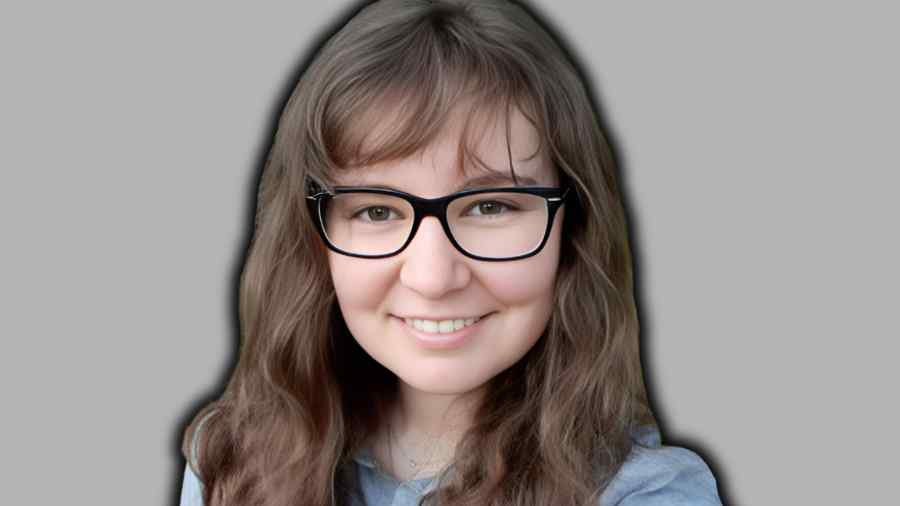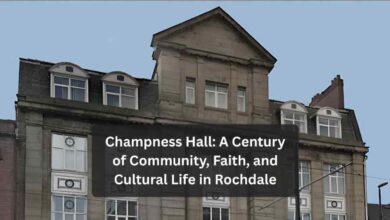Cerys Hughes: The Brilliant Linguist Bridging Human Speech and Artificial Intelligence

Among the rising stars in the field of modern linguistics, Cerys Hughes stands out as a name that symbolises both intellectual depth and interdisciplinary creativity. A researcher and PhD candidate at the University of Massachusetts Amherst, she embodies the intersection of human language, artificial intelligence, and cognitive science. Her academic work delves into how humans perceive, produce, and learn the sounds of language — and how computers can be taught to understand those same principles. In a world increasingly shaped by technology and communication, her studies offer crucial insights into the mechanics of speech and the future of AI-driven language systems.
Early Life and Academic Foundations
Cerys Hughes began her academic journey at Ohio State University, where she pursued a Bachelor of Science in Computer Science with an Artificial Intelligence specialisation, alongside a major in Linguistics. This dual focus provided her with a rare combination of technical and theoretical skills — one grounded in algorithms and data, the other in the intricate study of human language. Her early education reflected her curiosity about how minds, both human and artificial, process speech and meaning.
During her undergraduate years, Hughes demonstrated a remarkable ability to link computational logic with linguistic phenomena. She explored how algorithms could simulate aspects of human speech perception, laying the foundation for the sophisticated research she would later undertake at the doctoral level. Her work at Ohio State already reflected a fascination with the cognitive mechanisms that govern speech — how people learn sound categories, adapt to new accents, or distinguish subtle phonetic variations across languages.
Transition to UMass Amherst and PhD Research
After graduating in 2020, Cerys Hughes joined the University of Massachusetts Amherst, one of the world’s leading institutions for linguistic research. Now a fifth-year PhD student, she has carved a distinct academic identity within the university’s renowned linguistics department. Her focus areas — phonetic category learning, speech perception, and phonological typology — reveal an ambition to connect the physical realities of sound with the abstract systems of language structure.
Her research explores how humans learn to recognise and categorise the sounds of speech, a process that underpins every language. For instance, when a baby learns to distinguish between the sounds “b” and “p,” the brain is forming phonetic categories that will become the foundation for spoken communication. Hughes’s work extends this natural learning process into computational models, attempting to replicate and analyse it within artificial systems.
This fusion of phonetics, psychology, and machine learning offers not only insights into human cognition but also applications in fields such as speech recognition, linguistic typology, and even neurolinguistics. Through her modelling work, she examines how sound systems evolve, how languages differ in their use of voicing or tone, and what constraints shape the patterns that emerge across the world’s languages.
Core Research Themes
1. Phonetic Category Learning
One of Cerys Hughes’s most influential areas of study is phonetic category learning — the process through which humans identify and differentiate sounds in their native or second languages. She investigates the factors that influence how these categories are formed, including exposure, perception, and the physical properties of speech. By modelling this process computationally, she demonstrates how artificial systems might mirror or deviate from human behaviour.
Her work has shown that certain patterns of learning in neural networks can predict sound changes or typological tendencies observed in natural languages. This research not only enriches our understanding of linguistics but also contributes to AI speech systems, which rely on the accurate identification and classification of sounds.
2. Speech Perception
Speech perception lies at the heart of both linguistics and communication technology. Hughes’s research investigates how people process overlapping or ambiguous acoustic cues — for example, how the human brain distinguishes between similar consonants when multiple features (like pitch and timing) interact. Her experimental and computational studies reveal the complexity of perception, suggesting that even slight variations in sound can reshape the way languages evolve.
By combining laboratory phonetics with computational modelling, she provides evidence for how perceptual biases influence linguistic change. Her insights have implications not only for linguistics but also for improving automatic speech recognition systems, which must learn to handle the same ambiguities that challenge human listeners.
3. Phonological Typology
Phonological typology examines patterns across the world’s languages — why certain sound systems are common while others are rare. Cerys Hughes studies how the process of learning itself might shape these patterns. For example, she explores whether the ease or difficulty of acquiring certain sound contrasts could explain why they appear more frequently across languages.
This perspective, often called learning-based typology, bridges two traditionally separate domains: experimental phonetics and theoretical phonology. Her work helps explain why languages develop particular sound systems and offers testable predictions about which linguistic patterns are likely to emerge or disappear over time.
Contributions to Computational Modelling
Cerys Hughes’s computational expertise sets her apart from many linguists. She employs neural networks and other machine-learning frameworks to model aspects of phonetic learning and sound change. One notable project, Probing a Neural Network Model of Sound Change, examines how a computer trained on speech data internalises distinctions such as voicing and pitch. By probing these models, she uncovers parallels between machine representations and human perception — an approach that offers powerful tools for both theoretical and applied linguistics.
In another collaborative study, she analysed the interaction of voicing cues in speech discrimination and production, revealing that perceptual and articulatory systems sometimes process information differently. These findings have profound implications for understanding how humans adapt speech patterns over generations — and how computers might one day replicate such adaptive processes.
Academic Collaborations and Publications
Hughes’s collaborations extend across several prominent researchers in the field. She has co-authored papers with Kristine Yu, Joe Pater, and Seung Suk Lee, contributing to the intersection of phonological theory and computational simulation. Her work has been presented at major linguistic conferences, including the International Congress of Phonetic Sciences (ICPhS).
In addition to her research, she plays an active role in academic teaching, offering tutorials and materials that introduce students to neural network modelling and quantitative linguistic methods. Her teaching approach reflects the same clarity and analytical precision that characterise her scholarly work.
The Role of Artificial Intelligence in Her Linguistic Vision
A defining aspect of Cerys Hughes’s career is her ability to integrate artificial intelligence into the study of human language. While many linguists study how humans speak, she studies how machines can learn to perceive and categorise sounds in a human-like way. This line of inquiry is vital to advancing speech technology, improving machine translation, and refining language-learning tools.
Her research underscores that the boundaries between linguistics and computer science are increasingly artificial. Understanding human language today demands an appreciation for both symbolic reasoning and data-driven learning. By applying AI methods to classical linguistic questions, Hughes is helping to shape a future where technology not only processes but truly understands human speech.
The Human Element Behind the Research
Despite her technical focus, Cerys Hughes’s work is deeply humanistic. Her studies explore one of the most intimate aspects of human identity — our voices and the sounds that define our communication. Every model she builds, every experiment she designs, is ultimately aimed at understanding how people connect through language.
Her research also reflects a broader vision of academia: one that values curiosity, collaboration, and the blending of diverse perspectives. In her, the analytical mind of a programmer meets the sensitivity of a linguist. She demonstrates that the future of science lies not in silos but in synthesis — a harmony of disciplines that mirrors the harmony of sounds she studies.
Recognition and Future Prospects
Cerys Hughes is widely regarded as one of the most promising young linguists of her generation. Her combination of technical skill, theoretical insight, and commitment to rigorous research places her at the forefront of computational phonetics. As she approaches the completion of her PhD, her future trajectory could lead toward academic teaching, interdisciplinary research, or technological innovation within AI and linguistics.
Her contributions already resonate beyond the university setting, inspiring students and colleagues alike. In an age when the line between human and machine communication is rapidly blurring, scholars like Hughes will define how we understand and navigate that interface.
Conclusion
Cerys Hughes exemplifies the future of linguistics — a future where technology and humanity meet through the study of language. Her journey from computer science to phonology reveals an enduring fascination with how sound becomes meaning, how learning shapes speech, and how machines might one day share our capacity for linguistic understanding. Through her pioneering work in phonetic category learning, speech perception, and computational modelling, she has become a vital voice in the ongoing conversation between science and communication.



